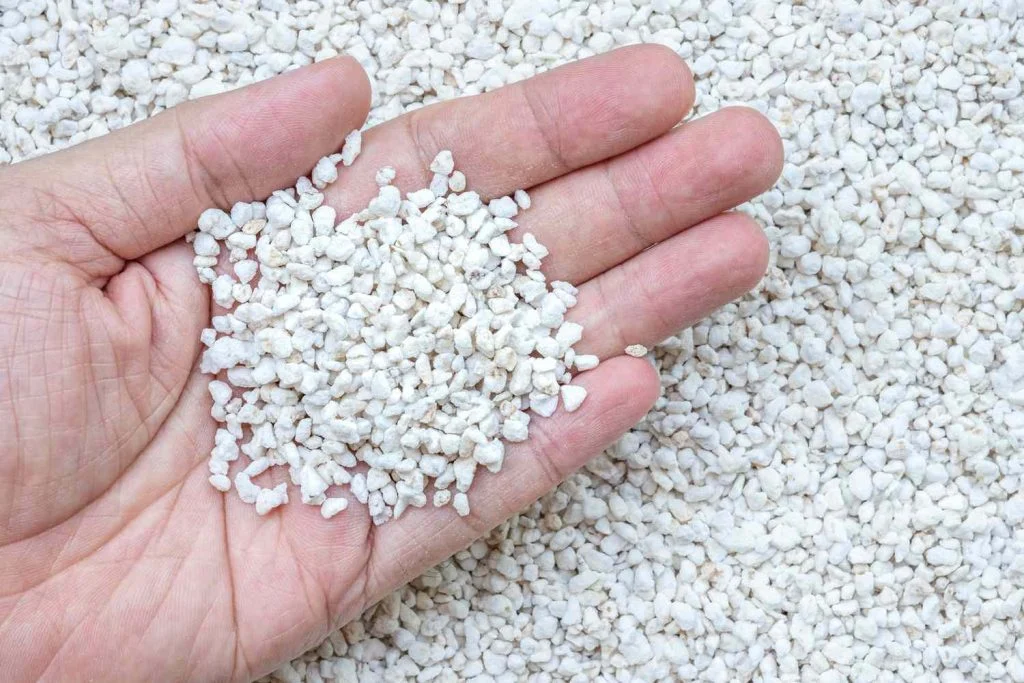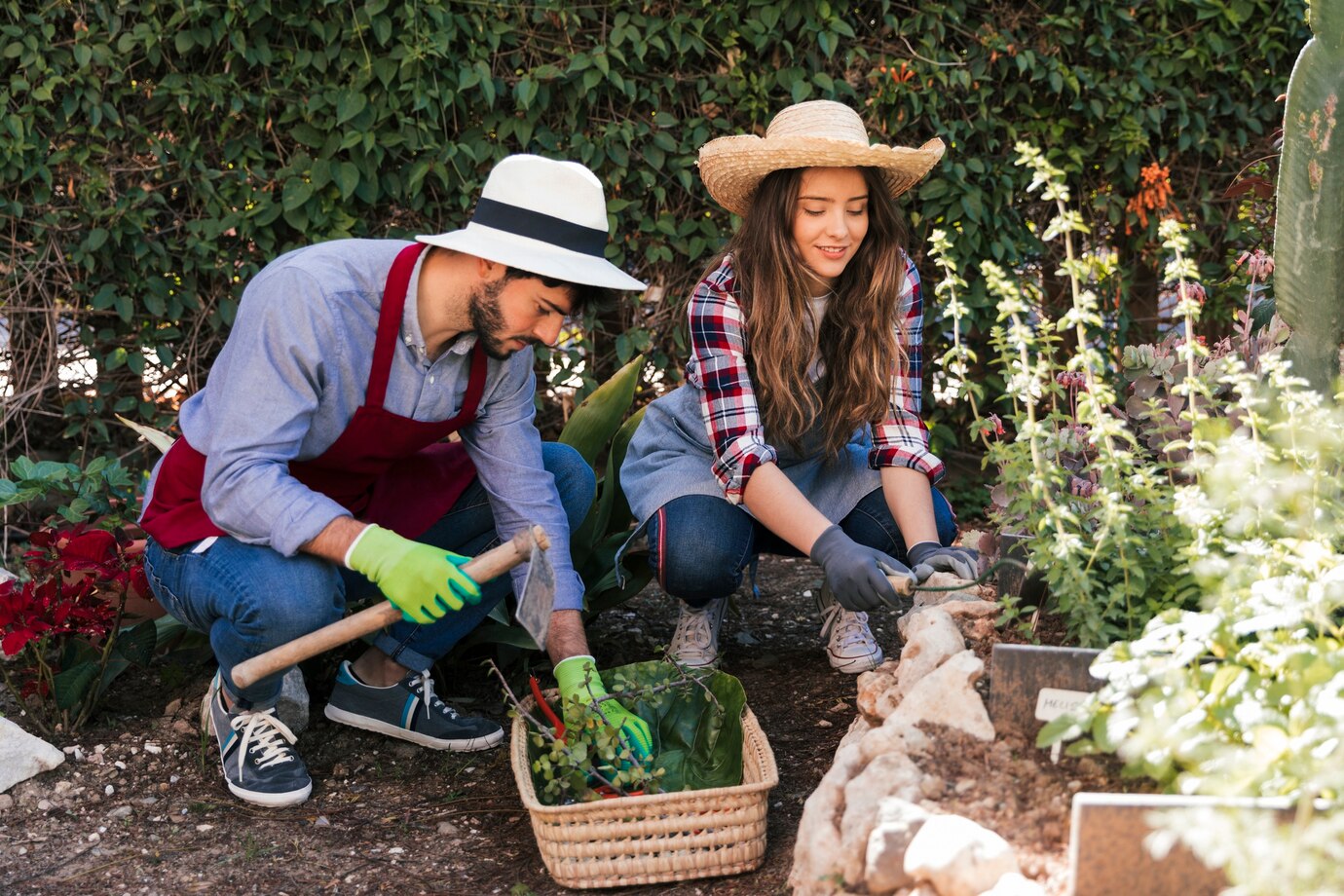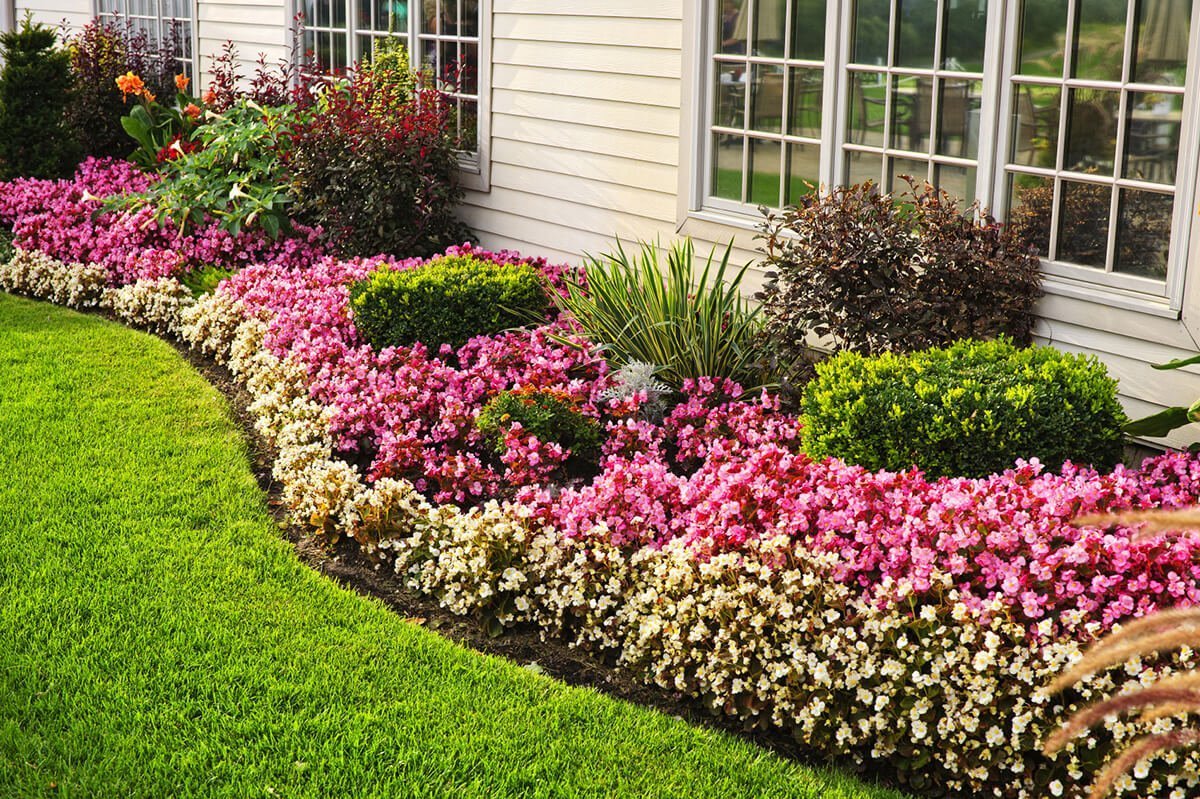As any avid gardener knows, keeping plants healthy and thriving is the top priority, whether you’re tending to houseplants, container gardens, or garden beds. One valuable addition to your gardening toolkit is perlite, a material mixed into soil to improve drainage and support strong root growth. If you’ve ever wondered what is perlite, how it works, and how to use it effectively, our gardening experts have already broken it all down for you.
Table of Contents
ToggleWhat Is Perlite?
Perlite is a naturally occurring volcanic glass commonly used in gardening. Its lightweight and porous structure promotes healthy plant growth. It is made from a type of volcanic glass called obsidian. When exposed to extremely high temperatures, obsidian expands and transforms into small, white granules filled with tiny air pockets.
These air pockets play a key role in enhancing drainage and aeration, which improves soil structure, supports strong root development, and reduces the risk of waterlogged soil and root rot. You can easily find perlite at local garden centers, nurseries, home improvement retailers or through online suppliers.
Benefits of Using Perlite
Adding perlite to your garden soil offers multiple benefits that contribute to healthier, more vigorous plants. Beyond improving drainage and aeration, it helps create a more balanced growing environment.
Prevents Soil Compaction
Perlite keeps soil loose, preventing it from becoming compacted over time. It allows roots to grow freely and access oxygen more efficiently. This is especially useful in container gardening or heavy clay soils.
Aids in Root Development
Thanks to its structure, perlite encourages roots to spread out easily. Its loose, well-draining nature creates an ideal environment for root growth and development. It can lead to stronger and more resilient plants.
Retains Moisture Without Waterlogging
While it improves drainage, perlite also holds a small amount of water on its surface. This ensures roots stay hydrated without the risk of sitting in soggy soil, reducing the chance of root rot.
Neutral pH
Another reason gardeners love perlite is that it’s pH-neutral. That means it won’t alter the acidity or alkalinity of your soil. It is suitable for a wide range of plants with different pH preferences.
Minimize Risk of Plant Diseases
Disease prevention is a major concern for any gardener. Since perlite is non-organic, it doesn’t support the growth of pests or pathogens. Using it in your garden can reduce the risk of diseases linked to organic matter.
How To Use Perlite In Your Garden
So, you’ve got your hands on a bag of perlite, now what? This lightweight material can be a game-changer for your garden. Here are some of the most effective ways to use perlite in your planting routine.
Seed Starting
To give your seeds the best chance at success, combine perlite with seed-raising mix in equal parts. This blend creates a moist, well-ventilated environment ideal for fragile seedling roots. You can also sprinkle a layer of perlite over light-sensitive seeds. It holds moisture and still lets light pass through to support germination.
Use Perlite When Taking Cuttings
Perlite helps retain moisture in soil blends, making it especially useful when propagating plants from cuttings. For best results, use a compost mix specifically formulated for cuttings. It tends to be finer in texture and lower in nutrients than standard all-purpose compost. Combine this with perlite in equal parts (a 50:50 ratio), fill your containers, water thoroughly, and let the mixture drain for a few hours before placing your cuttings.
You can also root cuttings directly in moistened perlite. To do this, dampen the perlite and place it into a clear plastic bag, filling it about one-third of the way. Prepare your softwood or semi-ripe cuttings by trimming just below a node, and remove the leaves on the lower half to two-thirds of the stem. Insert the trimmed end into the perlite, inflate the bag slightly with air, and seal it shut. In a few weeks, you should notice root development. Once the roots are strong and well-established, the cutting can be transplanted into a pot with standard compost.
Use Perlite to Aid Drainage
Succulents and other moisture-sensitive plants thrive when perlite is blended into their potting mix. Perlite introduces air pockets into the soil and promotes effective drainage. It prevents roots from sitting in overly wet conditions. For best results, combine perlite with compost at roughly a 1:4 ratio. Mix thoroughly before planting to ensure even distribution throughout the soil.
Use It as A Top Dressing
A light layer of perlite on the surface of your potted plants can act like a mini moisture shield. It reduces evaporation and helps the soil stay damp for longer between waterings.
Disadvantages of Using Perlite
Although perlite offers numerous benefits, it’s also essential to consider a few drawbacks. Due to its excellent drainage properties, perlite doesn’t retain nutrients effectively. You’ll need to fertilize regularly to ensure your plants get the necessary nourishment.
Another downside is that perlite tends to be dusty. It’s a good idea to wear protective gear like a mask and goggles when handling it to avoid irritation. Because it’s so lightweight, perlite can also be blown away by wind if it’s not thoroughly mixed into the soil, which may affect its long-term effectiveness.
Since perlite is derived from a nonrenewable natural resource, its environmental impact should be considered when choosing soil amendments.



